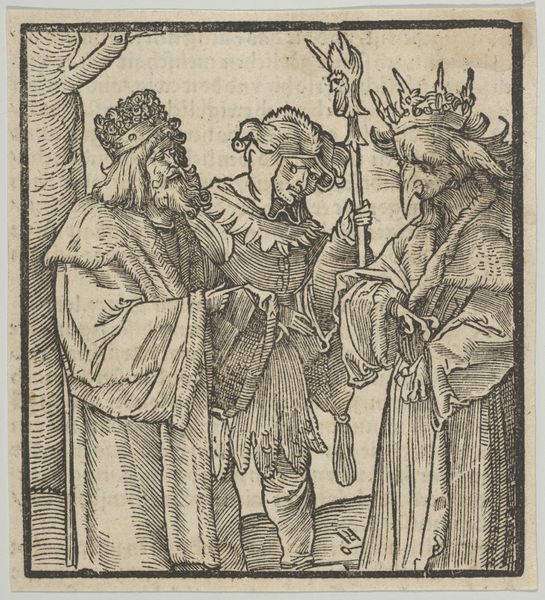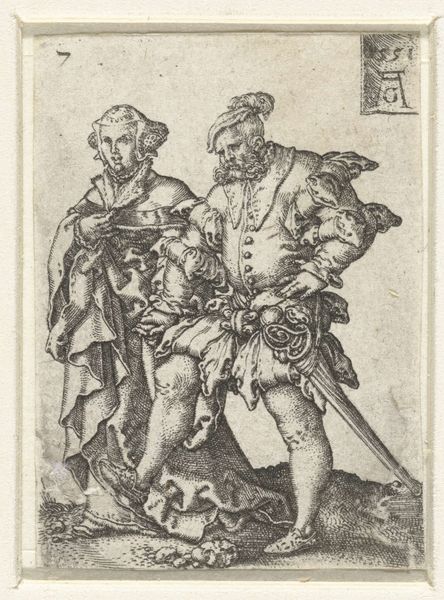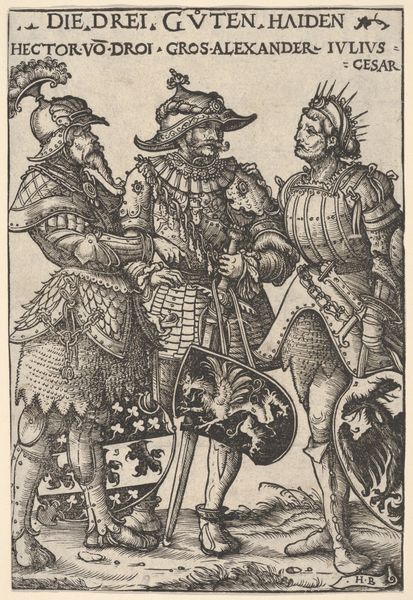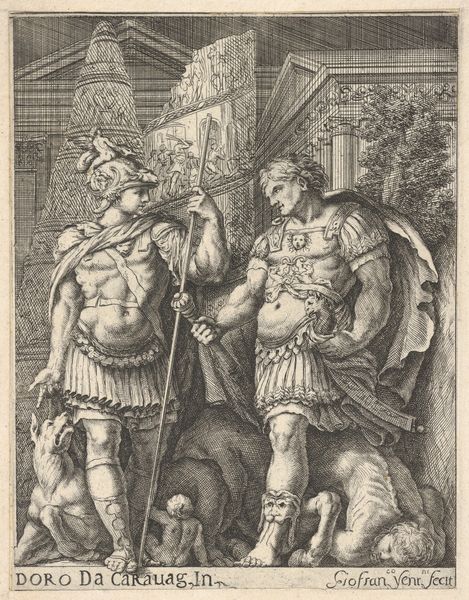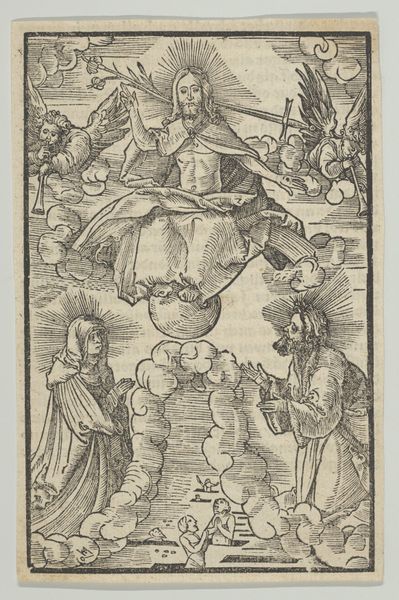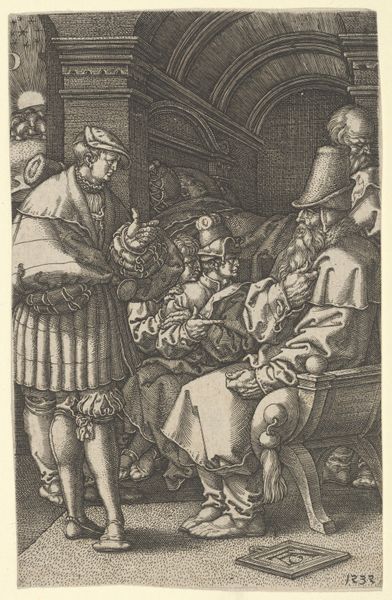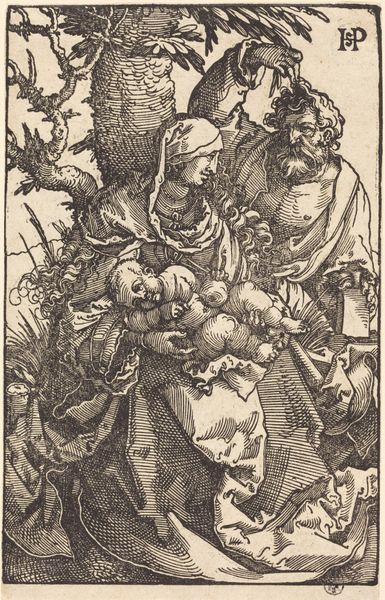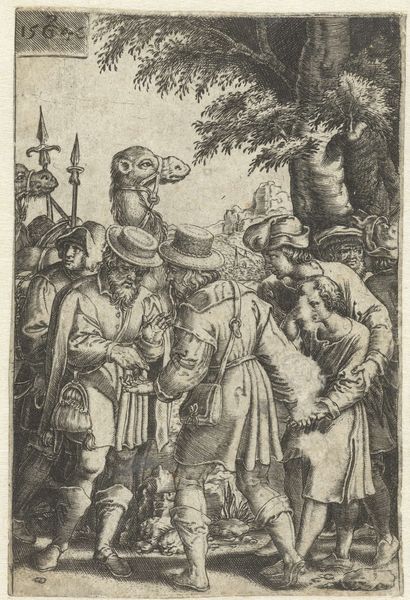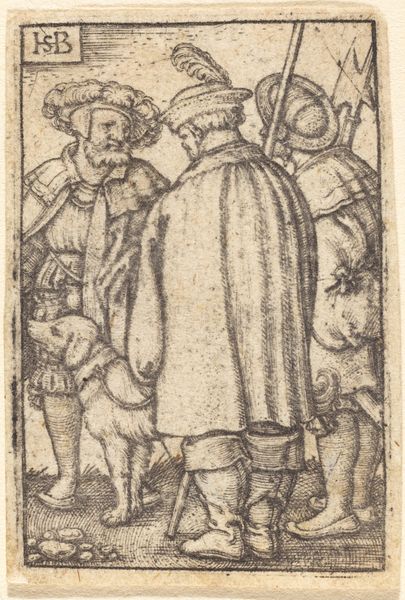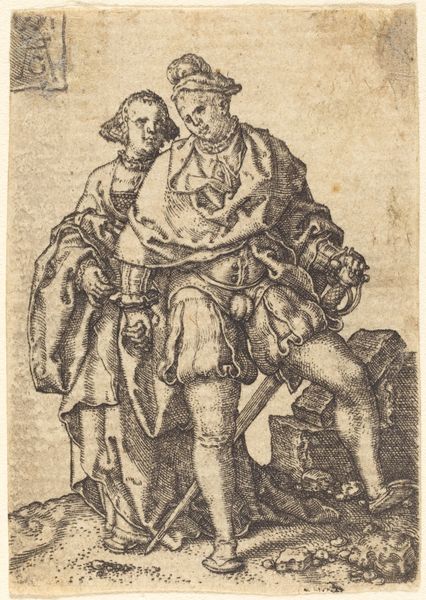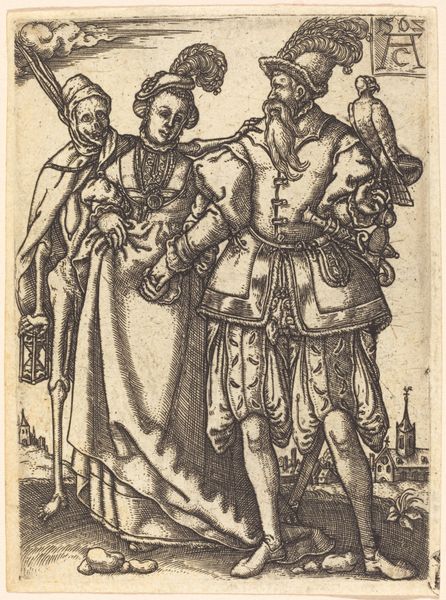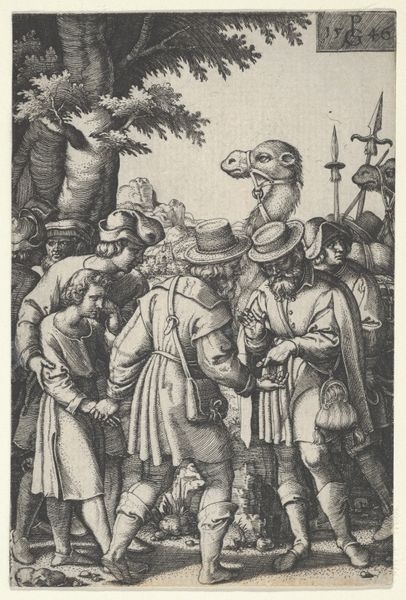
The Three Jewish Heroes (Die Drei Guten Juden), from Heroes and Heroines 1516
0:00
0:00
drawing, print, woodcut
#
drawing
#
narrative-art
#
pen drawing
# print
#
11_renaissance
#
woodcut
#
history-painting
#
northern-renaissance
Dimensions: Sheet: 7 5/8 × 5 1/8 in. (19.4 × 13 cm)
Copyright: Public Domain
Curator: This striking woodcut by Hans Burgkmair, created in 1516, is titled "The Three Jewish Heroes," or "Die Drei Guten Juden," from the series "Heroes and Heroines." What leaps out at you? Editor: Power, mostly. A very stylized power, but imposing nonetheless. The figures loom, really fill the space. I find myself pondering their stoicism. The level of detail for a woodcut seems really advanced. Curator: Absolutely, there's an almost overwhelming richness to the detail! You can really get lost in the textures of the armor. Burgkmair was really experimenting with light and shadow, pushing the medium in new directions. Think about the period – it's right at the cusp of the Reformation. This is from a series idealizing strong leadership figures, heroes if you will. Editor: Right, this heroic ideal emerges in a really complex context for Jewish figures. Given the time and shifting religious landscapes, the artwork has unavoidable links to Christian interpretations and potential misappropriations of Old Testament figures, which really troubles me. How does this depiction skirt, or not, potential antisemitic readings popular then? Curator: That’s a vital lens to view it through, of course. Burgkmair wasn't Jewish himself. These figures—Joshua, David, and Judah Maccabee— are re-interpreted through a decidedly Christian lens as examples of righteous kingship. Yet, the work might reveal both respect and a simultaneous effort to fit them within a specific Christian framework. What does this assimilation even look like through visual rhetoric? Editor: Well, look at the iconography! Each figure brandishes shields with recognizable symbology, which helps, but at the same time homogenizes. Also, note the very prominent signatures—this is definitely meant to impress an audience, flexing Burgkmair's own prowess in printing. I struggle with works like this because while the technique is compelling, the message remains tangled and fraught. It seems that in this Northern Renaissance context, the intent behind the work makes me pause, a lot. Curator: I understand that struggle. It pushes us to ask what honoring means and who gets to define it. Editor: Exactly, and whether appreciation of craftsmanship excuses complicated and thorny motivations. Anyway, still incredibly wrought for its time. Curator: Yes. Ultimately, art remains a conversation, right? Editor: Right! A continuing conversation.
Comments
No comments
Be the first to comment and join the conversation on the ultimate creative platform.
